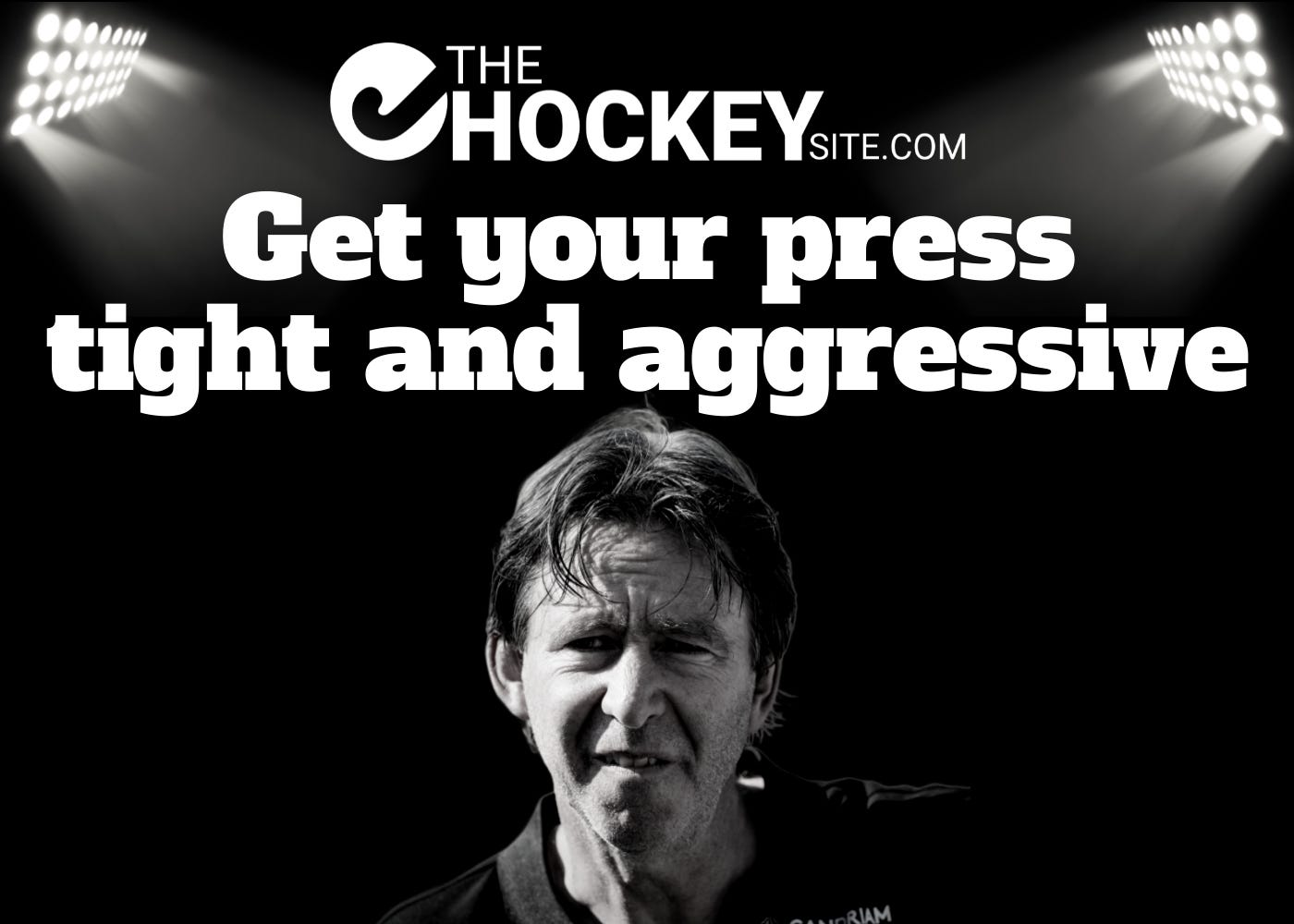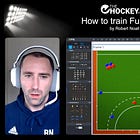Get your press tight and aggressive
Some thoughts on how to train the full press...
The full press is one of the few elements of defending in our game of hockey even the fans enjoy. Other than that, if managed well, it’s a powerful move for the team off ball to get back in possession.
Training a full press requires a combination of tactical understanding, physical intensity, and clear communication among players. Here’s a structured approach to effectively train your team for a full press:
1. Recognize Pressing Triggers
A successful full press starts with identifying the right moments to engage. Triggers include:
Negative body positioning: When an opponent’s body is turned away from the play.
Wide horizontal passes: These are slower and easier to intercept.
Poor ball reception: A bad first touch or fumble creates an opportunity to press aggressively.
Drill Idea: Set up a small-sided game where players must recognize these triggers and react immediately. Use a whistle or verbal cues to highlight when a pressing trigger occurs.
2. Angle of Approach
The angle at which players approach the ball carrier is critical. For example:
Force the play outside to limit options.
Split the center backs to disrupt their passing lanes.
Drill Idea: Practice 1v1 pressing scenarios where the defender must angle their approach to guide the attacker into a predetermined zone.
3. Compact Shape and Intensity
The full press relies on maintaining a compact team shape. Players must stay close enough to support each other while applying pressure. Intensity is key—players need to commit fully to the press to prevent the opposition from breaking through.
Drill Idea: Play a game where a goal only counts if all players are over the halfway line when the goal is scored. This encourages the entire team to move up together and maintain compactness.
4. Limit Touches
Limiting the number of touches the opposition can take forces quicker decisions and increases the likelihood of errors. This is particularly effective in a full press, where the goal is to capitalize on mistakes.
Drill Idea: Play a small-sided game with a maximum of two touches per player. This increases the pressure on the ball carrier and simulates the intensity of a full press.
5. Game-Like Scenarios
To truly prepare for a full press, you need to replicate match conditions. Use end-game scenarios with specific rules to reinforce pressing principles:
A goal counts double if the team wins possession in the opposition’s half and scores from that possession.
Both teams have a free player to simulate overload situations.
Drill Idea: Organize a scrimmage where one team practices the full press while the other focuses on breaking it. Switch roles at halftime to give both teams experience.
6. Communication and Roles
Clear communication is essential in a full press. Each player must understand their role, whether it’s pressuring the ball, cutting off passing lanes, or covering space. Assign specific responsibilities and rehearse them in training.
Drill Idea: Use a walkthrough session to explain each player’s role in the press. Then, gradually increase the intensity to full-speed practice.
7. Conditioning for High Intensity
A full press demands high levels of fitness. Players need to be able to sprint repeatedly and recover quickly. Incorporate conditioning drills that mimic the demands of pressing, such as shuttle runs or interval sprints.
Drill Idea: Include short, high-intensity sprints followed by brief recovery periods in your warm-up or cool-down.
Final Thoughts
As Raoul Ehren mentioned in a recent AMA, the success of any press—full or half-court—depends on how close players are to each other and the intensity with which they execute it. If the press isn’t tight and aggressive, it’s easy for opponents to break through.
If you're looking for an answer to your own coaching questions, ask your question here to get an answer based upon the many, many talks I had with some of the best coaching minds in the game of hockey 🏑
And if you’d like tailored advice for your team, you can always book a session with a top coach via https://gotyourback.app.
Sources:









Great article! Thanks Ernst!